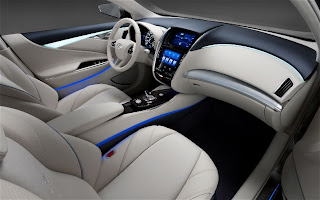Ever
since the first hybrid -- the spacey, two-seat Honda Insight -- arrived
in the U.S., most green cars have featured love-it-or-hate-it styling.
Some of that has been by design, with the goal of making them instantly
recognizable as different from a normal, gas-powered car. Indeed,
nothing says hybrid quite like the wedge shape of a Toyota Prius. Nissan
has been seeking that same type of recognition in the all-electric
arena with its Leaf.
But
as green becomes more mainstream, that strategy is starting to change.
Recently, several gas-powered cars, including the Ford Focus and Hyundai
Sonata, were fitted with alternative powertrains, with more on the way.
And automakers that are developing green halo cars are striving to
produce designs that are recognizable but not as potentially
off-putting. This issue is becoming increasingly important in the
burgeoning "sustainable luxury" car segment. One only need look at the
Fisker Karma or Tesla Model S to know that expressive, dynamic exterior
designs and alternative power can coexist.
Nissan's Infiniti brand will be one of the first mainstream manufacturers to produce a unique, all-electric luxury car, the Infiniti LE, which was unveiled in concept form at the 2012 New York auto show.
At the time, Infiniti said the LE concept previewed roughly 80-85
percent of what the final car will look like when it hits dealer
showrooms in early 2014. Although it's based on the Nissan Leaf, even a
well-trained eye would be hard-pressed to spot any similarities. More
important for Infiniti, reaction to the LE's design has been
overwhelmingly positive.
As a member of the Infiniti EV Insiders
group assembled to receive early behind-the-scenes access as the
Infiniti EV makes its way from concept to showroom, I recently got a
look at the LE design process during a roundtable at the Nissan Design
America studios in Southern California.



No comments:
Post a Comment